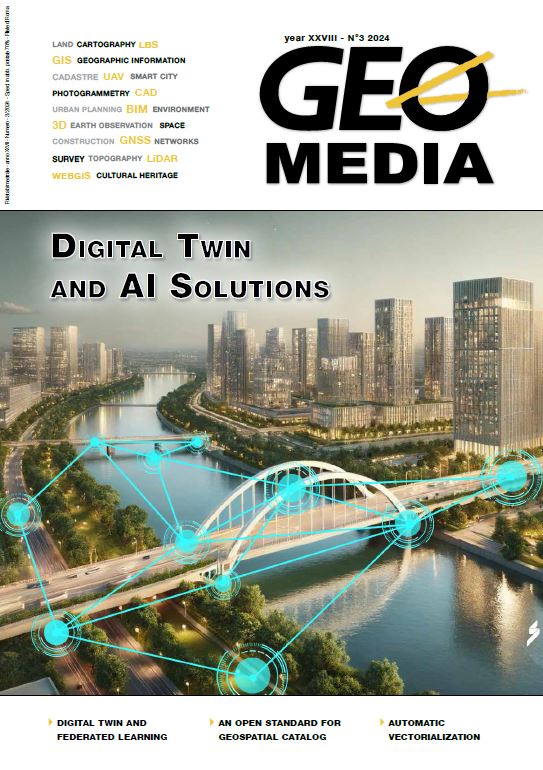Automatic Vectorization of Historical Maps
Keywords:
Cartography, Historical Maps, GIS, Automatic vectorization, artificial intelligence, geometric dataAbstract
For the most diverse practical purposes and communication needs (from trade to conquests or exploratory voyages), man has always represented space through the production of maps. There are countless varieties of themes, styles and graphic languages, types of representation (pictorial maps, bird's eye views, cadastral and topographic maps) used throughout history to depict, in particular, the landscape and the urban fabric. The informative, historical, cultural and identity value of this cartographic heritage, now preserved in archives and institutions around the world, is inestimable. Due to the need to preserve its content from the ravages of time and to allow its "digital" use, an increasingly intense campaign of digitization of these sources has been launched in recent years (as has happened, for example, for other historical data, such as photographs and
books). The growing availability of digital historical maps and, at the same time, the notable progress in data processing and analysis, today offers new perspectives for the use and valorization of these resources. In the case, in particular, of ancient cartography, there are increasingly broader scenarios for accurate studies on the evolution and transformation of urban structures, to support careful urban planning policies or reconstruct historical scenarios (Farella et al., 2021).
References
Chen, L.C., Papandreou, G., Kokkinos, I., Murphy, K. and Yuille, A.L., 2017. Deeplab: Semantic image segmentation with deep convolutional
nets, atrous convolution, and fully connected crfs. IEEE transactions on pattern analysis and machine intelligence, 40(4), pp.834-848.
Chen, Y., Chazalon, J., Carlinet, E., Ôn V? Ngoc, M., Mallet, C. and Perret, J., 2024. Automatic vectorization of historical maps: A benchmark.
Plos one, 19(2), p.e0298217.
Chrysovalantis, D.G. and Nikolaos, T., 2020. Building footprint extraction from historic maps utilizing automatic vectorisation methods in open
source GIS software. Automatic vectorisation of historical maps. Department of Cartography and Geoinformatics, ELTE Eötvös Loránd University, Budapest, pp.9-17.
Craciun, D. and Le Bris, A., 2022. Automatic algorithm for georeferencing historical-to-nowadays aerial images acquired in natural environments.
The International Archives of the Photogrammetry, Remote Sensing and Spatial Information Sciences, 43, pp.21-28.
Duan, W., Chiang, Y.Y., Leyk, S., Uhl, J.H. and Knoblock, C.A., 2020. Automatic alignment of contemporary vector data and georeferenced
historical maps using reinforcement learning. International Journal of Geographical Information Science, 34(4), pp.824-849.
Farella, E.M., Özdemir, E. and Remondino, F., 2021. 4D building reconstruction with machine learning and historical maps. Applied Sciences,
(4), p.1445.
He, K., Zhang, X., Ren, S. and Sun, J., 2016. Deep residual learning for image recognition. In Proceedings of the IEEE conference on computer vision and pattern recognition, pp. 770-778.
Iosifescu, I., Tsorlini, A. and Hurni, L., 2016. Towards a comprehensive methodology for automatic vectorization of raster historical maps. e-
Perimetron, 11(2), pp.57-76.
Heitzler, M. and Hurni, L., 2020. Cartographic reconstruction of building footprints from historical maps: A study on the Swiss Siegfried
map. Transactions in GIS, 24(2), pp.442-461.
Le Riche, M., 2020. Identifying Building Footprints in Historic Map Data using OpenCV and PostGIS. Automatic Vectorisation of Historical
Maps. ELTE Eötvös Loránd University, Budapest, Department of Cartography and Geoinformatics, pp.18-30.
Luft, J. and Schiewe, J., 2021. Automatic content?based georeferencing of historical topographic maps. Transactions in GIS, 25(6), pp.2888-2906.
Petitpierre, R. and Guhennec, P., 2023. Effective annotation for the automatic vectorization of cadastral maps. Digital Scholarship in the Humanities, 38(3), pp.1227-1237.
Downloads
Published
How to Cite
Issue
Section
License

This work is licensed under a Creative Commons Attribution-NonCommercial-ShareAlike 4.0 International License.
Gli autori che pubblicano su questa rivista accettano le seguenti condizioni:- Gli autori mantengono i diritti sulla loro opera e cedono alla rivista il diritto di prima pubblicazione dell'opera, contemporaneamente licenziata sotto una Licenza Creative Commons - Attribuzione che permette ad altri di condividere l'opera indicando la paternità intellettuale e la prima pubblicazione su questa rivista.
- Gli autori possono aderire ad altri accordi di licenza non esclusiva per la distribuzione della versione dell'opera pubblicata (es. depositarla in un archivio istituzionale o pubblicarla in una monografia), a patto di indicare che la prima pubblicazione è avvenuta su questa rivista.
- Gli autori possono diffondere la loro opera online (es. in repository istituzionali o nel loro sito web) prima e durante il processo di submission, poiché può portare a scambi produttivi e aumentare le citazioni dell'opera pubblicata (Vedi The Effect of Open Access).





